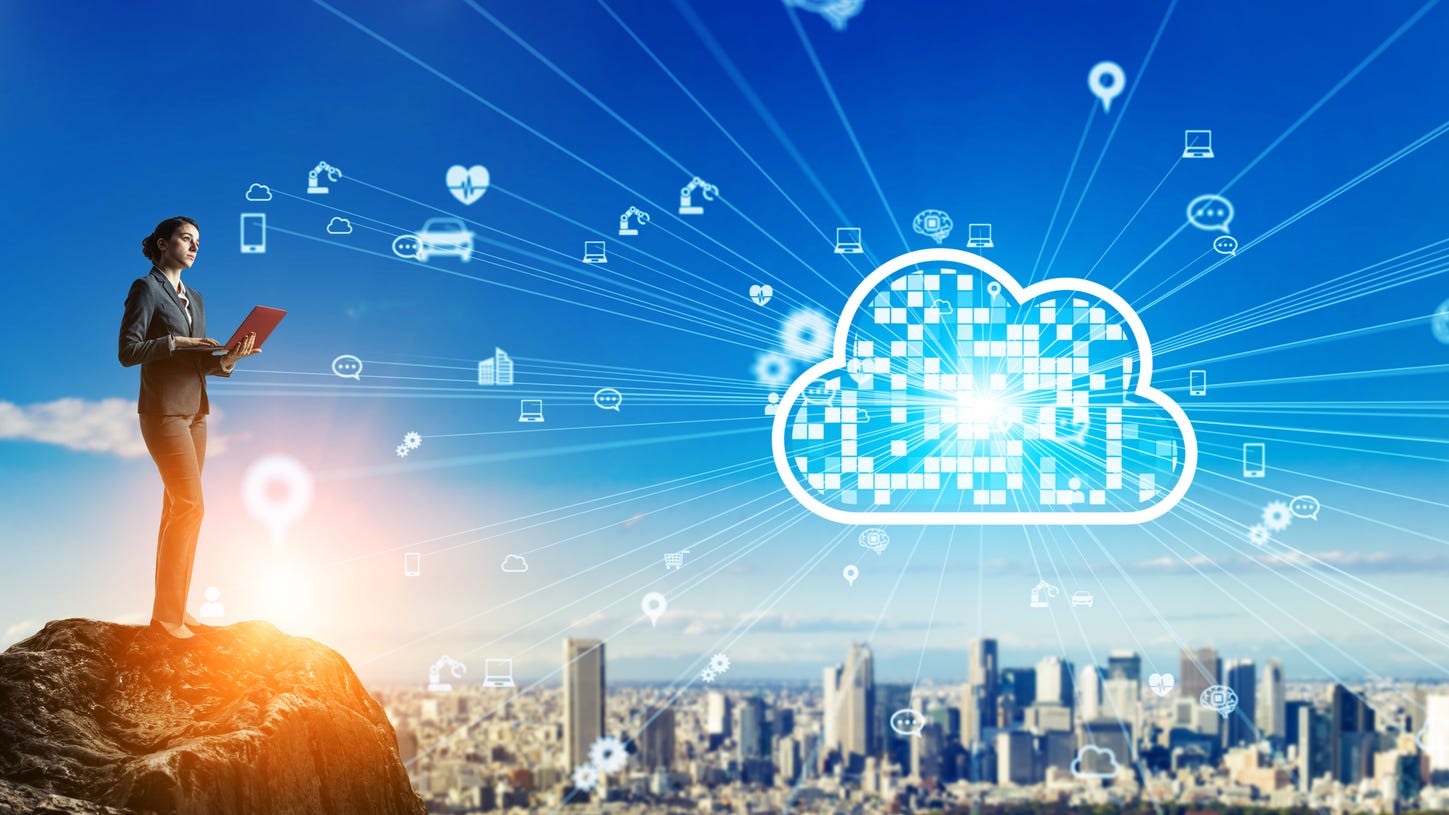How Value Stream Management is Fueling Digital Transformation

One of the world’s largest aerospace companies, The Boeing Company has been
employing VSM for several years now. Through VSM, they optimized resource
utilization and reduced waste. “We always thought we were doing a good job of
producing value until we started to work through this,” explained Lynda Van
Vleet, Boeing’s portfolio management systems product manager. “In our first two
years, we saved hundreds of millions of dollars. But that wasn’t our goal. I
think a lot of organizations look at this as a way of saving money because you
usually do, but if you start out looking at it as a way of creating value, that
just comes along with it.” The organization changed legacy approaches to product
management and project investment. This enabled them to speed up their ability
to innovate and pursue digital transformation. ... By establishing cross-team
visibility, leaders were able to spot redundancies. For example, they saw how
different IT organizations had their own analytics teams. “We had people in
every organization doing the same thing,” explained Van Vleet. Boeing’s
executives established a single analytics team to realign the work more
efficiently and improve consistency.
Rethinking Risk After the FTX Debacle

The threat surface for FTX clients wasn't just about protecting their FTX
passwords or hoping the exchange wouldn't get hacked like the Mt. Gox bitcoin
exchange and so many others did. Instead, their portfolios were at risk of
implosions over assets and investments they had never heard of. That is the
definition of risk: having your hard-earned money and investments merged with a
toxic mix of super-risky sludge. That’s a helpless place to be. After more
than 20 years in cybersecurity, it is difficult not to think about risk exposure
and threat management in a case like this. Security teams are dealing with
something much more akin to SBF than Madoff. There is no singular threat facing
an enterprise today. Instead, it is a constellation of assets, devices, data,
clouds, applications, vulnerabilities, attacks, and defenses. Security teams'
biggest weakness is that they are being asked to secure what they can neither
see nor control. Where is our critical data? Who is accessing it, and who needs
access? Every day in cybersecurity, the landscape of what needs to be protected
changes. Applications are updated. Data is stored or in transit among multiple
clouds. Users change. Every day represents new challenges.
Quantum Machine Learning: A Beginner’s Guide

Welcome to the world of quantum machine learning! In this tutorial, we will walk
you through a beginner-level project using a sample dataset and provide
step-by-step directions with code. By the end of this tutorial, you will have a
solid understanding of how to use quantum computers to perform machine learning
tasks and will have built your first quantum model. But before we dive into the
tutorial, let’s take a moment to understand what quantum machine learning is and
why it is so exciting. Quantum machine learning is a field at the intersection
of quantum computing and machine learning. It involves using quantum computers
to perform machine learning tasks, such as classification, regression, and
clustering. Quantum computers are powerful machines that use quantum bits
(qubits) instead of classical bits to store and process information. This allows
them to perform certain tasks much faster than classical computers, making them
particularly well-suited for machine learning tasks that involve large amounts
of data.
Importance of anti-money laundering regulations among prosumers for a cybersecure decentralized finance
To the extent of our knowledge, this is the first study to assess this
possibility with supportive evidence from a game theoretical perspective. In
addition, our study examines and sheds light on the importance of AML
regulations among prosumers in fulfilling the institutional role of preventing
cyberattacks by the decentralized governance in a blockchain-based sharing
economy. This paper focuses on prosumers as they undertake institutional roles
in blockchain-based sharing economy models (Tan & Salo, 2021). In fact,
most hackers are prosumers and may serve as end-users as well as developers.
Therefore, their impact can be significant in setting the tone for safety and
security of a blockchain-based sharing economy. Last but not least, our paper
provides policy suggestions for creating effective cybersecurity efforts in
permissionless DeFi without relinquishing its decentralized nature. Our first
policy suggestion is the integration of artificial intelligence (AI) employing
machine learning (ML) techniques to promptly flag, track, and recover stolen
tokens from offenders.
Conscious Machines May Never Be Possible

Pondering this question, it’s important to recognize that intelligence and
consciousness are not the same thing. While we humans tend to assume the two
go together, intelligence is neither necessary nor sufficient for
consciousness. Many nonhuman animals likely have conscious experiences without
being particularly smart, at least by our questionable human standards. If the
great-granddaughter of LaMDA does reach or exceed human-level intelligence,
this does not necessarily mean it is also sentient. My intuition is that
consciousness is not something that computers (as we know them) can have, but
that it is deeply rooted in our nature as living creatures. Conscious machines
are not coming in 2023. Indeed, they might not be possible at all. However,
what the future may hold in store are machines that give the convincing
impression of being conscious, even if we have no good reason to believe they
actually are conscious. They will be like the Müller-Lyer optical illusion:
Even when we know two lines are the same length, we cannot help seeing them as
different.
Six Ways To Pivot Hiring Strategies To Attract Cybersecurity Talent

To recruit and retain cybersecurity talent, you should change your approach
with these six strategies. Learn from past hirings, whether successful or not:
Not every hire will turn out as expected, but you can learn from these
previous decisions. Remember, an interview is a conversation: You and the
candidate have a lot to learn about each other. You could lose a good hire if
interviews are tightly controlled and formal. In the “real world” of
cybersecurity, communication and collaboration are critical, so that’s the
type of environment you should create in the hiring process. Don’t rush to
hire: Even if you are understaffed and have vacancies open for some time,
you’ll lose more time and money by hiring the wrong people. Be patient in the
process. Find someone who matches your culture: Someone can be a brilliant
technical candidate but still be wrong for your organization. In many
circumstances, culture fit means someone with soft skills and wants to grow
and evolve. Keep in mind that a highly motivated individual is teachable: They
can develop their soft and technical skills under you.
DataOps as a holistic approach to data management

The DataOps approach, which takes its cue from the DevOps paradigm shift, is
focused on increasing the rate at which software is developed for use with
large data processing frameworks. DataOps also encourages line-of-business
stakeholders to collaborate with data engineering, data science, and
analytics teams in an effort to reduce silos between IT operations and
software development teams. This ensures that the organization’s data may be
utilized in the most adaptable and efficient manner to provide desirable
results for business operations. DataOps integrates many facets of IT, such
as data development, data transformation, data extraction, data quality,
data governance, data access control, data center capacity planning, and
system operations, because it encompasses so much of the data lifecycle.
Typically, a company’s chief data scientist or chief analytics officer leads
a DataOps team comprised of specialists like data engineers and analysts.
Frameworks and related toolsets exist to support a DataOps approach to
collaboration and greater agility, but unlike DevOps, there are no software
solutions dedicated to “DataOps.”
How edge-to-cloud is driving the next stage of digital transformation

The thing about computing at the edge is that it needs to run at the speed
of life. A self-driving car can't take the time to send off a query and
await a response when a truck swerves in front of it. It has to have all the
necessary intelligence in the vehicle to decide what action to take. While
this is an extreme example, the same is true of factory processes and even
retail sales. Intelligence, data analysis, and decision making must be
available without a propagation delay, and therefore must live at the edge.
Of course, all of this adds to the management overhead. Now you have
management consoles from a large number of vendors to contend with, plus
those for your services on-premises, and then all the stuff up in the cloud.
This is where integration is necessary, where it becomes absolutely
essential that all your IT resources – from the edge all the way up to the
cloud – need to be managed from a single, coherent, manageable interface.
It's not just about ease of use. It's about preventing mistakes and being
able to keep track of and mitigate threats.
Cloud to edge: NTT multicloud platform fuels digital transformation

The platform is the heart of our Multicloud as a Service offering because it
provides visibility, control and governance across all clouds and for all
workloads. It enhances the cloud providers’ native control planes with
AI-backed insights for anomaly detection, correlation forecasting, automated
operations, agile deployments and more, without limiting direct access to
the cloud. These elements give organizations more comfort in consuming these
services in a way that is closely aligned with their needs. ... This
can be difficult for many clients to do themselves because most have managed
their technology in a particular way for years and now have to make a step
change into the cloud paradigm. But NTT has operated cloud platforms and
delivered managed services across multiple industries and technologies for
more than two decades, so we’re perfectly placed to help them make the leap.
Some of the components of our platform may be familiar, but how we bring
them together is unique. Our many years of operating experience have been
baked into this platform to make it a true differentiator.
Top Decentralized Finance (DeFi) Trends in 2023

Governance tokens give individuals the authority to vote on blockchain
project development and management-related matters. By having the power to
have a say in blockchain project operations, it becomes possible to ensure
the goals/interests of token holders are the same or similar. For example, a
DeFi project like Compound lets users use native tokens for various farm or
rent income schemes. It has its Token (COMP) that governs the Compound DeFi
protocol's growth. ... It will soon be possible to watch the development of
new social networks by creators and followers. New immersive fan economy
fueled by social tokens in the metaverse can revolutionize digital
monetization. Communities or celebrities can monetize their brand further by
using social tokens. They will create bidirectional relationships between
artists and customers with reciprocal benefits. Individuals, rather than
organizations, become the agents of creativity in a dispersed collaborative
paradigm. It is a unified and linked metaverse where tokenized NFTs may
contain digital data rights while storing, tracking, and enforcing those
rights.
Quote for the day:
"Coaching isn't an addition to a
leader's job, it's an integral part of it." --
George S. Odiorne
No comments:
Post a Comment